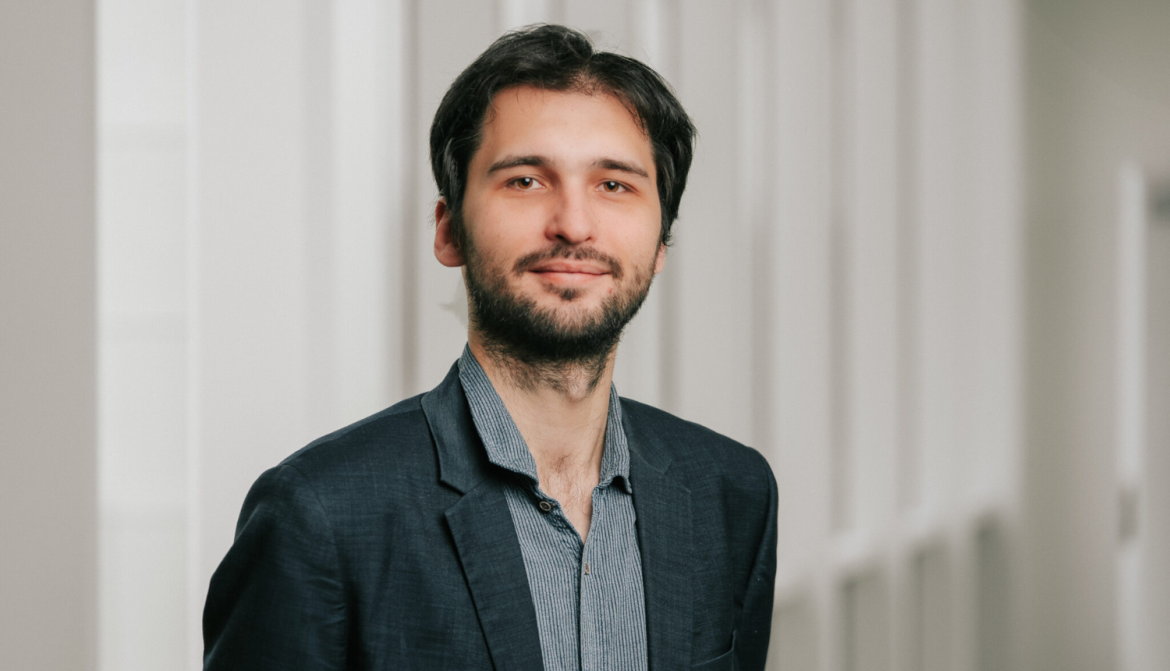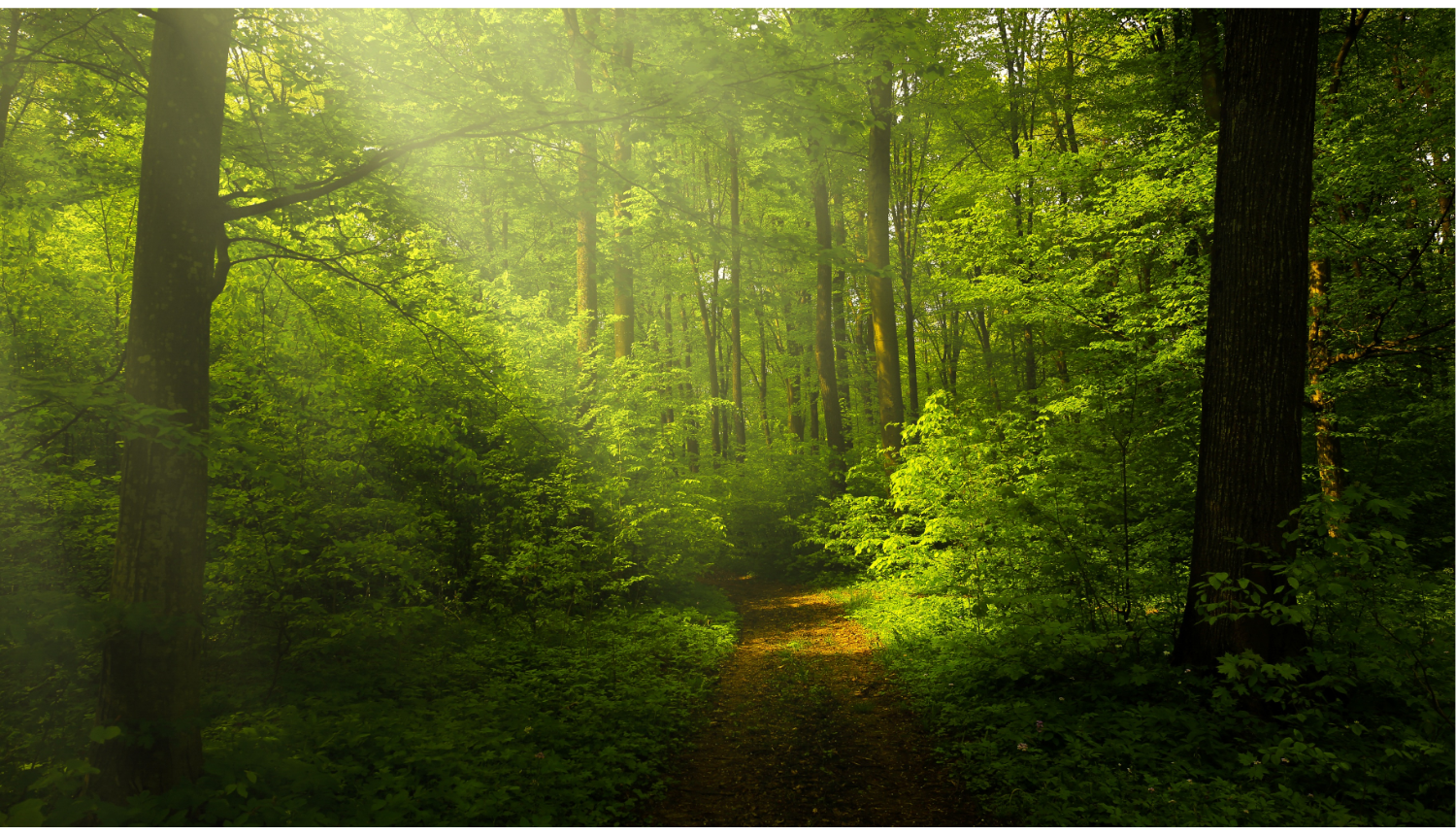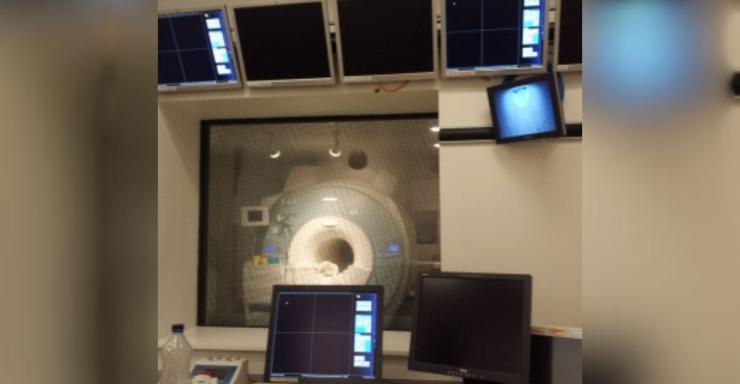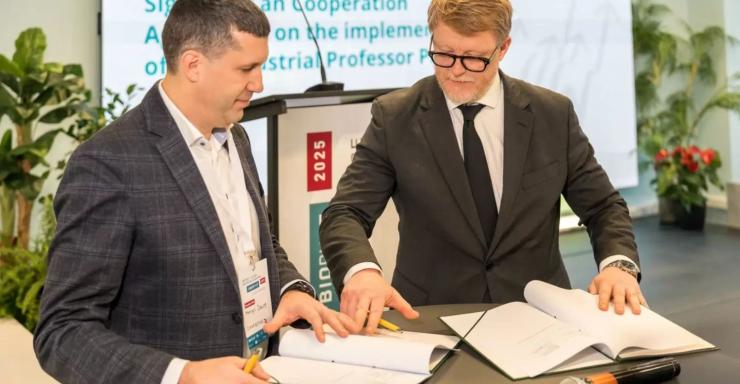Scientists are increasingly calling for medicine to return to its roots – to nature itself. Natural substances are becoming a crucial starting point in the development of new medicines, as their compounds tend to cause fewer side effects than the synthetic drugs to which we have grown accustomed. Modern chemistry allows us to accurately replicate even the most complex molecules created by nature, and at times, even improve upon them, making them more effective and better suited for therapeutic use. However, to replicate what nature has created, a scientist may need many months, sometimes even years. Still, their contribution brings us closer to better, more effective, and safer medicines.

Such work has been carried out by Latvian Institute of Organic Synthesis (OSI) researcher Georgijs Stakanovs, who, at the end of last year, successfully defended his doctoral thesis titled “Semisynthesis of Exotic Terpenoids from (‒)-β-Caryophyllene.”
“I’m endlessly fascinated by how clever and complex nature is!” says the young scientist. “And how difficult it is to replicate the processes that occur in something as seemingly simple as a plant.”
What Plants Know About Healing
For his research, “raw material”, Georgijs chose beta-caryophyllene – a fragrant substance produced by plants such as cloves, black pepper, and cinnamon. It is one of the plant terpenes – compounds used by plants to communicate with their environment, attract pollinators, or defend against pests. Humans obtain terpenes from natural sources. Some are inexpensive and widely available on the market.
However, many naturally occurring compounds that are structurally complex and valuable for medical purposes are found only in rare and often protected plants and organisms, such as corals off the coast of Taiwan. These corals produce substances with anti-inflammatory, analgesic, and anti-cancer properties. However, these vital substances can only be extracted in minuscule quantities from marine organisms, and large-scale harvesting would threaten the survival of the corals themselves.
In his doctoral work, Georgijs used beta-caryophyllene as a chemically suitable starting material to synthesise (create in a lab) the same compounds found in corals. And he succeeded. Even more importantly, this method allows these compounds to be produced in much larger quantities than nature can provide. This means that industrial production for pharmaceutical use becomes a real possibility.
How a Doctoral Thesis Is Born
The road to successful synthesis is far from straightforward, but Georgijs finds it thrilling. Every research project begins in a rather academic way – with a thorough literature analysis and study of previous publications. From there, possible chemical reactions are planned, written out, and various options are evaluated.
“This kind of thinking goes on for days and nights, for months,” Georgijs recalls. “You could be cooking dinner and suddenly a new idea emerges – something worth jotting down, discussing, or testing.”
Once the long-developed plan is carefully weighed, scientifically justified, and agreed upon, experiments in the lab begin.
“You can have a strong grasp of chemistry, but chemistry will always be cleverer than you,” the young scientist says with a smile, quoting his scientific supervisor Aigars Jirgensons. “Reactions may work on a small scale, but fail when scaled up. Seemingly minor details, like stirring speed or heat release, can significantly affect the outcome when scaling a chemical reaction.”
Georgijs explains that synthesising the desired coral-derived compound in the lab required about six months of intensive daily work – finding and testing different paths to reach the desired result, a rare natural compound. Creating even more complex compounds, he says, can take as long as ten years.
However, once the path to producing a compound has been discovered, tested, replicated, and eventually adapted for industrial use, the actual “creation” of the substance for drug development takes only a few hours or days, depending on the complexity of the molecule.
From a Chance Meeting in the Sahara to a PhD
Though Georgijs is a rational thinker, endowed with analytical and critical reasoning, he strongly believes it’s important to develop one’s creative, intuitive, and irrational side as well. This is why he enjoys reading fiction and psychology alongside scientific publications, and also plays the guitar.
His “meeting” with chemistry was more fateful and symbolic than deliberate. As a young boy, he went on a trekking tour of the Sahara Desert with his mother, where the group happened to include a chemistry teacher from Riga. Later, when changing schools, Georgijs ended up in a class taught by that very same teacher he had met in the desert. Recognising his talent, she encouraged him to take part in chemistry olympiads and guided his path toward scientific studies.
“This strange encounter in the desert – and then again at school – directly influenced my career choice and is one of the most curious coincidences in my life. It’s like something out of Sting’s Desert Rose,” Georgijs smiles. “But even in synthetic chemistry, you can’t succeed without intuition and creativity, because the number of theoretical options you could test to get closer to your goal is many times greater than the time or resources you’ll ever have. You must choose intuitively, without any guarantees,” he says, describing the creative side of chemistry.
Science Continues Nature’s Story
After earning his doctoral degree, Georgijs acknowledges that he has reached an important personal milestone – one he’s proud of – but he already has plans for the future and his postdoctoral work. He’s preparing to return to the synthesis of natural compounds – this time, even more complex ones.
“By proving that complex and medically valuable compounds can be created in a lab, by replicating what occurs in nature, we take a step closer to a time when medicines have fewer side effects and greater efficacy. Of course, I’m still fascinated by what I call the miracle of organic synthesis – our ability to precisely create the necessary chemical bonds between atoms. And that lies somewhere between rationality and creativity – a kind of symbolic union of science and art,” says Georgijs with a smile.


